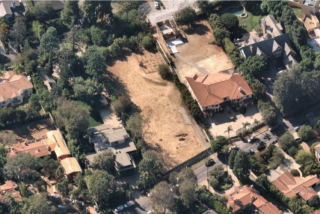The challenge of growing green
Today, Bruegmann and Ohland debate environmental concerns related to sprawl and growth. Previously, they discussed modifying public behavior, Smart Growth, and the social tensions over urban sprawl. Tomorrow they’ll focus on zoning and new construction.
Stop the sixth great extinction
By Gloria Ohland
Bob, I’ll let you in on a secret: For the past dozen years I have been an advocate for transit and development around transit, believing that it is the most profound way for this country to move toward more sustainable growth patterns. But honestly, I don’t care about transportation. What I really care about is the environment. It is the impact of sprawl and the road-building that makes sprawl possible, and the impact of all those cars on both the built and the natural environment, that really ticks me off. It seems downright immoral! I wrote a paper on biodiversity and smart growth for the Funders Network for Smart Growth in 2002, for which I gathered many of the facts cited below.
As I mentioned yesterday, the nature of development has changed dramatically since the invention of the suburb and sprawl. The amount of developed land has quadrupled in 50 years, consuming a third of our most productive farmland and more than half of all wetlands (91% in California) and it’s bumping up against the boundaries of national parks, forests and other protected lands. A 1994 survey of national parks found 85% were experiencing threats from outside their boundaries. A recent Nature Conservancy study found that roads and utility corridors posed a critical threat to biodiversity in 55 of 89 conservation areas. At our current rate of growth the amount of land developed in the next 25 years would equal the total amount developed since this country was founded! I can’t believe you would argue that this kind of growth is sustainable! Bob, don’t you care about sustainability?
Development causes the fragmentation and degradation of habitat and water resources, interrupts natural processes such as floods and fires, and ushers in an invasion of non-native species. Almost all species listed under the federal Endangered Species Act are endangered by the loss, fragmentation or other alteration of habitat, and exotic plants that readily invade habitat that’s been disturbed. Roads usher in an invasion of exotic weeds, pests and pathogens, and pollute habitat with noise as well as heavy metals, carbon monoxide and dioxide and pesticides, which typically end up in nearby aquatic systems. Sprawl is the No. 1 cause of habitat loss and fragmentation in California, threatening 188 of 286 imperiled or endangered species!
Moreover, conservationists say that in order to maintain a healthy ecosystem we need to provide for large predators such as grizzlies, wolves and lynx because without them ecosystems undergo dramatic changes that lead to “biotic simplification” and species loss. But big carnivores need big wildernessthe “Yellowstone to Yukon” wilderness stretching from the American West up into Canadain order to keep the gene pool healthy. In order for large carnivores to use this landscape they must cross 23 highways in Montana, 17 in Idaho, four in Wyoming, and 17 in British Columbia and Alberta. Road kills are a leading cause of death for animals; researchers estimate at least a million are killed each day on U.S. highways. Many large mammals avoid roads entirely, and smaller species are afraid to cross them, which means that roads fragment habitat into smaller and smaller patches, seriously constraining breeding populations and posing a major threat to biodiversity.
Concerns about road-building have prompted wildlife and wilderness advocates to join smart growth advocates in asking why the federal government is providing so much funding for sprawl-inducing infrastructure in the first placenot only roads but also sewers and water lines. That’s why wildlife and wilderness advocates are joining campaigns for more environmentally friendly transportation modes including intercity and high-speed railwhich have the potential to concentrate growth near stationsinstead of roads, which disperse growth everywhere.
Part of the problem is that animals and plants thrive in the same places that humans do: Florida, Southern California, the Pacific Northwest and coastlines, riparian corridors, valley bottoms and foothills everywherethe very same regions that are either developing most rapidly or that are already developed. Historically the extinction of both plant and animal species has closely followed the spread of humans from Africa and Eurasia. But the rate of extinctions is increasing so rapidly that conservation biologists now predict the loss of a third of the world’s pant and animal species within the next 50 years, a phenomenon of such apocalyptic magnitude they call it “the sixth great extinction.”
I think that this information compels us to safeguard our natural heritage by implementing smart growth measures wherever possible and reducing sprawl-inducing road-building.
Gloria Ohland is vice president for communications for Reconnecting America, a national nonprofit organization that works with the public and private sectors to promote best practices in development-oriented transit and transit-oriented development (TOD). She is co-author and co-editor of the award-winning Street Smart: Streetcars and Cities in the 21st Century; The New Transit Town: Best Practices in TOD; and Hidden in Plain Sight: Capturing the Demand for Housing Near Transit, a national market study funded by the Federal Transit Administration and released in 2005.
Don’t blanket the land with condemnation
By Robert Bruegmann
Gloria,
Many people who consider themselves environmentalists wrap themselves up in a mantle of moral superiority and, in so doing, strongly suggest that people who don’t agree with them either don’t have any interest in sustainability and the environment or are selfish and quite willing to damage the environment if it is in their own personal interest. To my mind, it is arguments of this kind, along with the equally rigid rejection of such claims by individuals who feel that environmentalists as a whole are elitists who put things like spurious animal rights ahead of human needs, that have led us to such an impasse on environmental matters. I believe everyone would be better off if more people could lower their voices and listen to alternative views.
You claim that the nature of development has changed greatly in the last 50 years and so it has. The rural population has fallen, the urban population has soared and cities across the affluent world have seen their densities plummet as the urban population has spread across more of the landscape. But seen in a longer perspective this is just the latest change in the tumultuous history of human settlements, and it is not necessarily alarming.
Let’s consider for a moment the Boston area. Rural New England has lost a large proportion of its rural population over the last 150 years because the land wasn’t really good for farming and technological advances in agriculture have dramatically increased crop yields across the world despite a dramatic fall in the number of farmers. In New England many of those farmers went to Boston, which swelled and in turn started to decentralize and scatter. Today you can find exurbanites in the Boston economic orbit living on 5 or 10 acres across much of New England.
According to much conventional environmental wisdom, this would be a tragedy because it would reduce agricultural production, consume an excessive amount of land, destroy habitat, reduce biodiversity, require excessive amounts of energy and increase pollution and greenhouse gases. But are any of these charges necessarily well founded?
The first is perhaps the easiest. There is no need for New England, with its rocky soil and harsh climate, to grow large amounts of staple crops. The United States, like most affluent countries in the West, grows more food than it needs, largely because of massive subsidies that not only are costly to American taxpayers but result in terrible damage to the economy of some of the world’s poorest countries when these surpluses are dumped there.
Most agriculture, moreover, is not particularly environmentally friendly. In fact the large-lot exurban spreads almost certainly have a far greater biodiversity and create less pollution than the heavily fertilized monocultures they replaced. New England has seen an explosion of green in this century as farmers abandoned their fields and moved to the city, and the farms became forests. This trend has continued even with massive suburbanization and exurbanization.
In fact, many suburbanites and exurbanites moved to their current locations precisely because they wanted a connection with the land. Individuals from the suburbs and exurbs, after all, probably constitute the majority of members in most environmental groups in this country, and many are among America’s most ardent stewards of the land. Families who live in a relatively low density are also the ones most likely to be able to disconnect from the power grid and generate all of their own power on site, collect all the water they need on their property and discharge it back into the ground on site. There is no reason to assume that high-density living is more sustainable than low-density living.
You spend most of your essay talking about species extinction. In doing so you confidently cite statistics about the spread of cities, the rate of species loss and damage done to habitat by roads and settlement. Let me admit up front that this issue is for me personally the one that gives me perhaps the most pause when I say that sprawl is not necessarily a problem.
Having said that, let me make a few observations. The first involves the idea that cities are “consuming” an excessive amount of land. Note first the highly prejudicial wording. How often do you hear the word “consume” applied to other uses, for example land used for ranching or national parks? Secondly, it is important to remember that the total urbanized portion of the United States, that is all the cities and suburbs, roads and other urban uses put together, uses much less than 10% of the total land.
Moreover, estimates about the number of species becoming extinct annually vary wildly. This is not surprising since we don’t even have any firm idea of the number of species in existence, with estimates ranging between 2 million and 100 million. Furthermore, we have very little way to know how many of these extinctions would have occurred with or without human settlement. In short the subject of species extinction is something of a black box. We obviously need to know a great deal more.
I am not suggesting that this means we should do nothing in the meantime. If we believe that species extinction is a big problem, let’s make a thorough survey a national priority and even before this is done hammer out some sort of agreement on remedies. Our extraordinary lack of knowledge on this issue is hurting not just the endangered species but every taxpayer in the country, because we are all paying for the epic courtroom battles and loss of time and money involved in arguing things parcel by parcel.
At base, though, species extinction has always been more than just a practical matter. It is so difficult to resolve because for many environmental activists it is a moral and metaphysical issue. Environmental activists often see Nature as purposeful and benign and Man as outside Nature. For many skeptics of remedies proposed by these environmental activists, Man is not outside Nature and so everything that human beings do is, by definition, natural. They would argue that all species are forced to share their habitat and question whether keeping man and animals apart is necessarily the best way to promote the welfare of either.
Blanket condemnations of low-density development and automobiles as environmental disasters are not, in my opinion, part of the solution to our very real environmental problems. They may even be part of the problem.
Robert Bruegmann is professor of art history, architecture and urban planning at the University of Illinois at Chicago. His most recent book is Sprawl: A Compact History, published by the University of Chicago Press in 2005.
| | | Day 4


